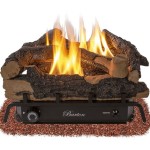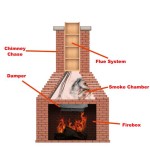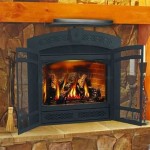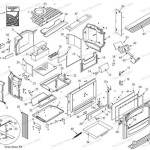Electric Fireplace With Real Flame: A Detailed Exploration
The allure of a fireplace is undeniable. It evokes feelings of warmth, comfort, and relaxation, creating a focal point in any living space. While traditional wood-burning fireplaces offer a genuine flame and authentic crackling sound, they also come with drawbacks such as the need for wood, the mess of ash, and concerns about air quality and safety. Enter the electric fireplace with a real flame effect – a modern alternative that seeks to capture the essence of a traditional fireplace without the associated inconveniences.
The term "electric fireplace with real flame" is often used to describe two distinct types of heating appliances. One type utilizes a combination of electric heating elements with advanced flame projection technology to simulate the appearance of a real flame. The other type, although less common, uses a bio-ethanol fuel source along with electric components to enhance the flame's appearance and provide supplemental heat. This article will explore both types, focusing on their functionalities, benefits, drawbacks, and key considerations when choosing an electric fireplace with a realistic flame.
Understanding Electric Fireplaces with Simulated Flames
The majority of electric fireplaces that feature a "real flame" effect utilize advanced technologies to create the illusion of a genuine fire. These technologies generally involve a combination of LED lights, mirrors, and projection techniques to simulate the flickering flames and glowing embers. The light source, often LED, shines onto a rotating reflector or a screen, creating a dynamic display that mimics the movement of real fire. Some models incorporate translucent screens or vapor technology to enhance the three-dimensional effect and further enhance the realism. The intensity and color of the simulated flames can often be adjusted to suit the user's preferences and create different moods.
The heating element in these electric fireplaces is typically a resistance-based heater or an infrared heater. Resistance heaters warm the air by passing electricity through a coil, while infrared heaters radiate heat directly, warming objects and people in their path. Most electric fireplaces offer adjustable heat settings, allowing users to control the amount of heat emitted. Some models also include a thermostat, which maintains a consistent room temperature.
The benefits of electric fireplaces with simulated flames are numerous. They are relatively easy to install, requiring only a standard electrical outlet. They produce no emissions, making them an environmentally friendly heating option. They are also safe to operate, as they do not produce open flames or hot surfaces, making them suitable for households with children and pets. Furthermore, they require minimal maintenance compared to traditional fireplaces, as there is no need to clean up ash or maintain a chimney.
Exploring Electric Fireplaces with Bio-Ethanol Flames
A smaller segment of the "electric fireplace with real flame" market utilizes bio-ethanol as a fuel source. These fireplaces incorporate a burner that holds the bio-ethanol fuel, which is then ignited to produce a real flame. While the flame is genuine, these units often integrate electric components to enhance the overall effect and provide supplemental heating. These electric components may include LED lighting to accentuate the flame's appearance and electric heating elements to boost the heat output.
Bio-ethanol is a renewable fuel made from plant-based sources such as corn or sugarcane. When burned, it produces relatively clean emissions, primarily carbon dioxide and water vapor. However, it's crucial to ensure proper ventilation when operating a bio-ethanol fireplace to prevent the buildup of carbon dioxide. The flame produced by bio-ethanol is typically smaller and more contained than a traditional wood-burning fire, but it still provides a visual appeal and a degree of warmth.
The appeal of bio-ethanol fireplaces lies in the fact that they offer a genuine flame without the need for a chimney or venting system. They are also relatively easy to install and operate. However, they do require the purchase and storage of bio-ethanol fuel, and the cost of fuel can be a recurring expense. Furthermore, the heat output from a bio-ethanol fireplace is generally lower than that of a traditional wood-burning fireplace or an electric fireplace with a resistance or infrared heater. Safety is also a crucial consideration with bio-ethanol fireplaces, as they involve an open flame. It's essential to follow the manufacturer's instructions carefully and never leave the fireplace unattended.
Key Considerations When Choosing an Electric Fireplace
Selecting the right electric fireplace with a real flame effect requires careful consideration of various factors. The intended use of the fireplace, the size of the room, the desired aesthetic, and the budget are all important considerations.
Firstly, determine the primary purpose of the fireplace. Is it primarily for aesthetics, providing supplemental heat, or a combination of both? If the primary goal is to create a visual focal point, an electric fireplace with a simulated flame may be sufficient. These models often offer a wide range of flame effects and aesthetic designs. If supplemental heating is also desired, consider the heating capacity of the fireplace and ensure that it is adequate for the size of the room. For larger rooms, a higher wattage heater might be necessary.
Secondly, consider the style and design of the fireplace. Electric fireplaces are available in a variety of styles, from traditional mantels to modern wall-mounted units. Choose a style that complements the existing décor of the room. The size of the fireplace is also an important consideration. Ensure that the fireplace is appropriately sized for the room and does not overwhelm the space.
Thirdly, factor in the features and functionalities offered by the fireplace. Look for features such as adjustable flame settings, adjustable heat settings, a thermostat, and a remote control. These features can enhance the user experience and provide greater control over the fireplace's operation. Energy efficiency is also an important consideration. Look for models with energy-saving features such as LED lighting and programmable timers.
Finally, consider the safety features of the fireplace. Opt for models with safety certifications from reputable organizations. Ensure that the fireplace has a tip-over switch, which automatically shuts off the unit if it is accidentally knocked over. For bio-ethanol fireplaces, ensure that the burner is designed to prevent spills and leaks. Always follow the manufacturer's instructions carefully and never leave the fireplace unattended.
In terms of maintenance, electric fireplaces with simulated flames require minimal upkeep. Regular cleaning of the glass screen or reflective surfaces is typically all that is required. Bio-ethanol fireplaces require more frequent maintenance, including refilling the fuel reservoir and cleaning the burner. It's crucial to use only the recommended bio-ethanol fuel and follow the manufacturer's instructions for cleaning and maintenance.
The cost of an electric fireplace with a real flame effect can vary widely depending on the type, size, features, and brand. Electric fireplaces with simulated flames are generally more affordable than bio-ethanol fireplaces. The ongoing costs associated with electric fireplaces are primarily electricity consumption. The cost of electricity will vary depending on the user's location and the electricity rates. For bio-ethanol fireplaces, the ongoing cost is the price of the bio-ethanol fuel. The cost of bio-ethanol fuel can vary depending on the retailer and the quantity purchased.
Ultimately, the best electric fireplace with a real flame effect is the one that best meets the user's individual needs and preferences. By carefully considering the factors discussed above, users can make an informed decision and choose a fireplace that provides warmth, ambience, and enjoyment for years to come. Before purchasing, it might be judicious to read online reviews and compare different models and brands. Visiting a showroom to see the flame effect in person can also be beneficial. Also, it is vital to adhere to all safety guidelines and recommendations provided by the manufacturer to ensure safe operation and prevent accidents.

Indoor Electric Fireplaces Heaters Real Flame

Do Electric Fireplaces Look Real Check The Flame Here

Real Flame Merced Grand 61 25 In Infrared Electric Fireplace White 8240e W Rona

Electric Fires That Look Like Real British

Real Flame Optimyst 500 Electric Fireplace Wignells Heating Cooking

Fiorella Electric Fireplace Pottery Barn

What Is The Most Realistic Electric Fire Fireplace Finesse

Realistic Electric Fireplace Modern Flames

Real Flame Belford 56 In Freestanding Electric Fireplace Tv Stand White 7330e W The Home Depot

Real Flame Marcello Slim Electric Fireplace Pottery Barn








